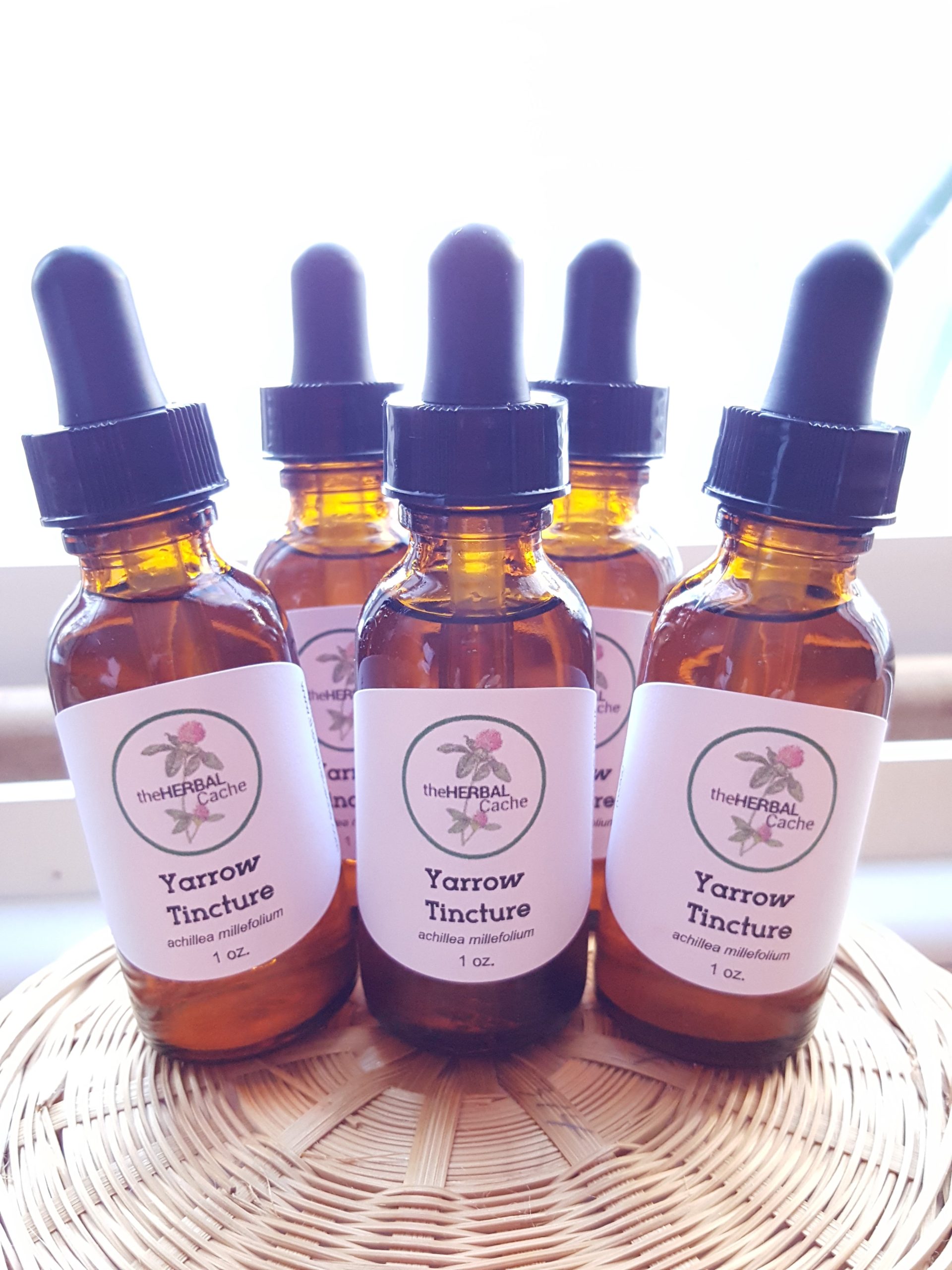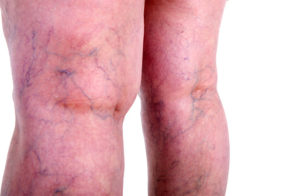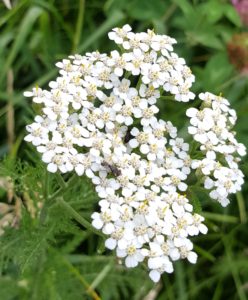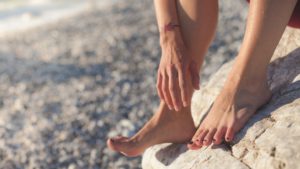×
Save 20% On Your Purchase!
Use code SAVE20 at checkout to save on your purchase today from my Herbal Shop!
×

Varicose veins are a common problem, affecting an estimated 25% of the population. While there are many treatments available, including surgery and compression stockings, some people prefer to try natural remedies first. In this blog, I will share 12 blog posts and articles discussing the benefits of using herbs to treat varicose veins and what those herbs are.
Varicose veins are veins that have become enlarged and twisted. They can be painful and unattractive. While varicose veins used to be treated with surgery, there are now a number of non-surgical treatment options available. One popular option is herbal support. Herbs can help to improve the function of the veins, reduce swelling and pain, and promote healing.

Herbs have been used for centuries to treat a variety of medical conditions, and varicose veins are no exception.
There are many different herbs that can be used to treat varicose veins, each with its own unique set of benefits.
Herbs offer a natural and affordable way to treat varicose veins. Some of the key benefits of using herbs include:

Herbs offer a safe and effective way to treat varicose veins, and I hope this blog post has provided a few ideas for you to start with.
Remember, an herb that works for one person, may not necessarily work for you. Experiment and try them, one at a time to see where you have the best results.
Exercise, diet and sleep also play a role, so don’t forget about them.
I make and sell a natural varicose vein cream that has helped a number of my customers over the years and it is my number one seller.
I grow, forage and wildcraft the yarrow and calendula that I use. The other ingredients I get from reputable sources, such as Mountain Rose Herbs.
If you are ready to combat your varicose veins, you can purchase it HERE.
Here is what one of my customers had to say:
I have to say my expectations were low when I purchased this, because I suffer from spider veins (not varicose veins) and based on my research, the only remedy was sclerotherapy, a costly procedure. I bought 2 small jars (at a great price btw) with nothing to lose. The first couple of weeks, I did not think it was working. Some days the spider veins looked a little faded, other days, unchanged. About 3-4 weeks into applying the cream 2x a day, my spider veins are nearly INVISIBLE!!! I’m genuinely mind blown. I feel so great knowing I won’t be self conscious wearing short shorts and exposing my spider vein-free thunder thighs to the world. About to purchase some more because I don’t wanna run out of this stuff. A 2 oz jar lasted me 4-5 weeks of 2x day application. If you have spider veins, definitely give this a try!
Yarrow is one of the world’s oldest medicinal plants and has been used for centuries. It was found among other medicinal herbs in a Neanderthal burial site in Iraq, which dates from around 60,000 BC.
Throughout history, it has been used for treating wounds, hence its common names “soldiers’ woundwort” and “staunchweed”.
Achillea millefollum
The genus, Achillea, was named after the Greek hero, Achilles, who used plant extracts to treat soldiers’ wounds in the battle of Troy. Millefolium means “a thousand leaves”.
The most common and well known use for yarrow is healing wounds. It also helps to control the bleeding of lacerations, puncture wounds, and abrasions.
Because of yarrow’s anti-inflammatory and antiseptic oils, astringent tannins and resins, it possesses excellent wound healing qualities. It also contains silica, which will help in repairing damaged tissue.
Achillea millefollum has antibacterial and antimicrobial so it will help in preventing any infection from setting in.
Make yarrow a staple in your first-aid kit. You never know when it will come in handy.
Yarrow is considered a bitter, which makes it a great partner for digestion. This in turn helps the body absorb more nutrients. It also helps with poor appetite due to low digestive secretions and general inflammation that makes tissues not function well. It has a slight affinity for the gallbladder and liver.
This plant can also help if you get food poisoning, by getting the toxins out of your system.
Yarrow has been used throughout history in relation to blood. It both activates blood platelets and breaks up coagulated blood. By thinning the blood, it moves congestion in the portal vein, the pancreas and the lungs.
It also stimulates the bone marrow and increases white blood cell production.
Achillea millefollum may also lower blood pressure by moving blood to the skin and easing the burden on the heart.
Yarrow is an astringent, and because of that, it is wonderful for varicose and spider veins. It astringent properties help tighten and tone the walls of the veins. This is the key ingredient in my ever popular varicose vein cream. Check out my blog post on varicose veins to learn more.
Place some crushed leaves up against the aching tooth and it will help relieve the pain.
Yarrow is used to protect the skin from excessive sun or wind. It can also help to clear up skin acne.
The astringent properties make it a go-to herb when one is hit with diarrhea.
Because it is a diuretic, yarrow promotes urine production and flow, which helps let out excessive fluids and toxins through enhanced urination.
The diaphoretic actions of yarrow can help move toxins out of the body through sweating, which helps the body to break fevers. By relaxing the skin, it will open the pores to allow copious sweating and the release of toxins.
Yarrow fights infection, helps with nausea, stimulates sweating, and lowers fever. Through thinning the blood and increasing circulation, it also helps congested people breath better. A classic cold and flu remedy is a combination of yarrow, peppermint and elderflower drunk hot.
Yarrow has been used successfully to treat asthma attacks through thinning the blood and increasing blood flow in the lungs.
If you ever get a nosebleed, all you have to do is pick a few fresh leaves and rub them between your hands to bruise them, releasing the aromatic oil. Roll the leaves into a nasal plug, insert into the affected nostril and leave until the bleeding completely stops before gently removing the plug.
But beware – yarrow can also cause nosebleeds as well. It is one of those plants that can cause what it cures. Hence, one of its nicknames is “nosebleed”.
Menstrual Cycle
Yarrow contains sterols, which have actions similar to hormones, and aid in balancing the menstrual cycle. So it is applicable in both extremely heavy or very scanty (and absent) menstruation. It may also be used externally as a sitz bath for painful cramping during menstruation.
In Sweden, they sometimes use yarrow in place of hops when brewing beer. It is said to be more intoxicating that way.
Yarrow has many uses in the garden. It’s small, delicate flowers are wonderful for bringing in bees and butterflies.
Yarrow is a great companion plant. It’s root secretions strengthen and protect nearby plants and help them become more disease resistant.
The roots of the yarrow plant bind loose soil together, thus helping prevent erosion.
Every garden should contain at least a clump of yarrow to help maintain a healthy ecosystem.
Many of the superstitions and incantations that involve Yarrow are focused on finding one’s partner. Many traditions suggest that the seeker, mainly young girls, would sew an ounce of Yarrow in a piece of their clothing or place it under their pillow before going to sleep.
“Good morrow, good morrow,
To thee, braw yarrow,
And thrice good morrow to thee;
I pray thee tell me today or tomorrow
Who is my true love to be.”
Yarrow is viewed by some as having a protective quality from “bad vibes” or that feeling of “everyone is against me”.
By using it as a flower essence or having the actual plant, it can help protect one from the negative outside influences one may have.
I wildcraft my yarrow in central Minnesota and make tinctures. They are available for purchase HERE.
https://wildfoodsandmedicines.com
All photos are the property of theHERBAL Cache, unless otherwise noted.

Varicose veins are part of getting older for some of us. As our bodies start taking the tole of our past years, it starts to show physically. You could say that is a sign of learned knowledge. But, for most of us, we would rather not show so many signs of getting older.
For now, lets take a look at one physical feature that many people are concerned about, and those are varicose veins. We’ll look at what they are, how they come to be and some natural ways one can try to subdue them.
Varicose veins are enlarged veins that have pushed themselves outward, just below the skin. They are most commonly found on the legs and feet, yet can affect any vein in the body.
Most are harmless. They are just a cosmetic issue for some people.
For some, varicose veins can be painful or sore. They can also cause issues for blood circulation. That can bring on swollen ankles, itchy skin and achy limbs.
Veins are continually working against the forces of gravity as they push blood back to the heart. Veins must be kept healthy and strong to maintain this level of work.
There are “valves” in the veins that push the blood back to the heart. Valves and muscles work together to get the job done. So if the muscles weaken, so do the valves.
As the valves and muscles weaken, blood starts to pool in these areas, which leads to varicose veins.
A variety of things can cause the weakening of valves and muscles. Some of those include obesity, being sedentary (which causes muscles to weaken), standing for a long period of time, pregnancy, menopause, aging, genetics and walking.
The primary symptom of varicose veins is visibility. They become swollen, misshapen veins on ones legs. Some people will also have pain, heaviness and achiness near these veins.
Swelling can also occur in the lower legs and ankles after standing for periods of time.
In severe cases, the veins can bleed and ulcers may form.
According to WebMD, varicose veins can sometimes be genetic, and women are twice as likely to develop them over men.
About 23% of Americans are affected in some way.
There are a number of things a person can do to help control and lessen the issue. The Mayo Clinic suggests exercise, elevating ones legs and wearing compression stockings.
Also, losing weight or maintaining a healthy weight can help minimize or prevent them as well.
Surgery is an option for those where lifestyle changes aren’t improving the condition or there is just too much pain. More information on surgical procedures can be found here.
Using herbs and plants is another way to deal with this issue.
One can look to herbs and plants to help with varicose veins in a natural way.
A number of herbs that can be used to minimize the effects of varicose veins are known as astringents. They help by tightening the tissues and getting them back to their original state, as best they can.
Some of these herbs include:
(helichrysum italicum) is named after the golden yellow flowers of the plant, and comes from the Greek words helios meaning sun and chrysos meaning gold. A common name for it is Immortelle.
Helichrysum has many medicinal properties and is known for its restorative and rejuvenating properties. It helps heal scars and supports cell growth by encouraging the recycling of dead cells and stimulating production of new ones.
This yellow flower can also be used to help with inflammation and clears blood clots by liquefying/thinning them.
Helichrysum is an anti-oxidant as well.
(aesculus hippocastanum), also known as buckeye in some parts, or conker tree in Europe.
Horse Chestnut supports blood circulation, thus helping those with varicose veins. As an astringent, it helps to tone vein walls which, when slack or distended, may become varicose, hemorrhoidal or otherwise problematic.
Aescin, a constituent found in horse chestnuts, performs an antioxidant function and has a general vasoprotective role by protecting collagen and elastin (the two chief proteins that form the structure of veins). There are multiple clinical studies showing that horse chestnut helps in reducing inflammation, alleviating circulatory problems affecting the legs and reducing varicose veins.
You can find our more about how horse chestnuts help with varicose veins in this article, “How to Treat Varicose Veins with Chestnuts“.
(quercus alba) is a tree native to North America and was used by Native Americans for many conditions. Throughout history, it has been known as a symbol of strength and endurance.
White oak is an astringent, due to its high level of tannins, and helps with inflammation and skin conditions, such as varicose veins.
It is also an antiseptic, so helps control infection internally and externally.
White oak also contains quercetin, which helps in strengthening the capillaries and veins.
Did you know you can grind the acorns into a flour? Pretty cool!
(Salix alba) has been used medicinally for over 5000 years. It is native to Europe and Central Asia.
The bark is known as being the original pain reliever because it contains salacin, which the body converts to salicylic acid. Thus if helps reduce fevers, pain and inflammation. It takes a little longer to work, but lasts much longer then aspirin and has less side gastronomic side effects due to the large amounts of tannins that protect the stomach.
The inner and outer barks have slightly different concentrations of compounds for different ailments.
Willow bark’s high concentration of antioxidants make it very beneficial for the health of the skin. It increases blood flow to the skin, which helps to reduce wrinkles and age marks.
(Hamamelis virginiana) is a fairly common shrub found in North America. Native Americans used it to help treat skin irritations and tumors.
Witch hazel is a great skin treatment because of its astringent properties. It helps with stretch marks, wrinkles, acne, hemorrhoids and varicose veins. It is also good for itchy skin when dealing with chickenpox, eczema, bug bites and poison ivy.
Witch hazel’s ant-inflammatory properties also make it a go-to for diaper rash and sunburns. Regular application helps in healing the damaged skin quicker.
Daily use of witch hazel helps to kill bacteria living on the skin and supports cell growth. It also helps to remove excess oil from the skin.
(Achillea millefolium) originated in Europe. It can now be found in many parts of North America. The Greeks used yarrow over 3000 years ago to treat wounds. The genus name, Achillea, honors the Greek hero Achilles; who reportedly used yarrow for himself and for his soldiers as a treatment for battle wounds. Yarrow was also commonly used during the Civil War to stop wounds from bleeding.
When used topically, yarrow is wonderful for helping with skin issues, such as rashes, hemorrhoids, varicose veins or broken wounds. It supports blood circulation, reduces blood stagnation and helps to tone vein walls with its astringent properties.
Herbal Products or DIY
One can make their own creams or ointments to help with varicose veins by using some of the herbs mentioned above. One place to purchase these herbs is at Mountain Rose Herbs.
If one can’t or doesn’t have the time to make a cream or ointment, I offer a wonderful cream for varicose veins that not only helps minimize them, but softens and hydrates the skin as well.
Another way to utilize herbs in controlling or minimizing varicose veins is by using tinctures topically. Put the tincture directly on the varicose veins and let dry on the skin, or use a cloth soaked with the tincture to lay directly on the veins for a period of time.
Using this natural method will take a little bit of time to see results, so one has to be patient. It took years for the varicose veins to appear, so they won’t disappear overnight.